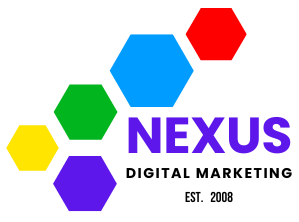Utah’s Digital Crossroads: 3 Tech Trends That Will Determine Your Business Future in 2025
The Quiet Revolution Transforming Utah’s Business Landscape
The executive team at Lehi-based SkyTech Solutions gathered around their conference table last quarter, facing a stark reality. Despite 15 years of steady growth in Utah’s thriving tech corridor, their revenue had plateaued. Meanwhile, a three-year-old competitor had just secured $12 million in funding and was rapidly capturing market share.
“We had the superior product and deeper industry expertise,” explains CEO Megan Lawson. “But they were leveraging digital capabilities we hadn’t prioritized. By the time we recognized the gap, they’d established a significant lead.”
SkyTech’s story isn’t unique in Utah’s business community. According to data from the Utah Department of Commerce, 37% of established businesses with revenues between $5-50 million are experiencing stagnation or decline despite the state’s robust economic growth. The primary factor separating thriving companies from struggling ones? Their approach to digital transformation.
While Utah continues to earn accolades as one of America’s most business-friendly states, a concerning digital divide is emerging. The Utah Technology Council’s 2024 State of Tech report reveals that businesses embracing specific emerging technologies are growing 2.8 times faster than their peers. This gap is expected to widen dramatically by 2025.
For Utah businesses, three specific digital trends stand at the crossroads between sustained growth and potential obsolescence. These aren’t merely national trends with local implications—they represent unique challenges and opportunities shaped by Utah’s distinctive business ecosystem, consumer behaviors, and competitive landscape.
Trend #1: Hyper-Personalized Customer Experiences Through AI-Driven Localized Data
When Salt Lake City-based outdoor retailer Mountain Peak implemented AI-driven personalization last year, they expected modest improvements in customer engagement. What they didn’t anticipate was a 43% increase in repeat purchases and a 27% lift in average order value within six months.
“The difference wasn’t just adding AI to our marketing mix,” explains Mountain Peak’s Chief Marketing Officer, Sarah Jensen. “It was how we leveraged AI specifically for Utah’s unique customer segments and buying patterns. We discovered our local customers have distinct preferences that national data models simply missed.”
What Mountain Peak recognized—and what many Utah businesses are overlooking—is that localized AI implementation yields dramatically different results than generic approaches. The Utah Consumer Behavior Index shows that customers in the state respond 32% more positively to personalization that acknowledges regional preferences, community connections, and local values.
While 76% of Utah businesses report using some form of marketing automation, only 18% have implemented true hyper-personalization systems that leverage local data sets. This capability gap represents both imminent risk and immediate opportunity.
Dr. Michael Chang, Director of the Digital Commerce Research Center at the University of Utah, sees this as a critical inflection point: “Utah businesses have traditionally competed on community connection and personal service. As national competitors deploy sophisticated personalization at scale, local businesses must elevate their digital capabilities while maintaining their authentic community connections. Those who fail to do so will find their competitive advantage rapidly eroding.”
The transformation is particularly evident in service-based businesses. Provo-based financial services firm Wasatch Advisors implemented an AI-driven client communication system that analyzes not just standard financial data but also Utah-specific economic indicators, local property values, and regional investment trends. The result? Client retention increased by 28%, and referrals grew by 35%.
“We’re seeing increasingly sophisticated expectations from Utah consumers,” notes James Wilson, Chief Data Officer at the Utah Digital Economy Council. “They want the convenience and personalization of digital interactions combined with the community understanding of local businesses. Companies that deliver this hybrid experience are securing dramatic competitive advantages.”
The personalization imperative extends beyond marketing communications. By 2025, customers will expect every touchpoint to reflect their specific needs and preferences. This includes product recommendations, service offerings, pricing structures, and even business hours and communication channels.
Trend #2: Integrated Physical-Digital Experiences Reshaping Utah’s Commercial Landscape
When customers enter Ogden-based retailer Alpine Home Goods, sensors recognize returning visitors, sending their preferences to sales associates’ tablets. Digital displays adjust to showcase products matching their previous purchases. After selecting items, customers check out via mobile app without waiting in line. Later, they receive maintenance tips specific to their purchases and invitations to in-store workshops.
This seamless integration of physical and digital experiences—sometimes called “phygital”—represents the second critical trend reshaping Utah’s business landscape. And the stakes couldn’t be higher.
The Utah Retail Federation reports that businesses implementing integrated physical-digital experiences saw 47% higher growth in 2023 compared to those maintaining traditional models. More concerning, businesses without phygital strategies experienced an average 12% revenue decline even in categories showing overall growth.
“Utah presents a unique case study in phygital adoption,” explains Dr. Rebecca Martinez, who researches digital transformation at Utah State University. “Our population combines tech-forward consumers who expect digital convenience with strong preferences for community connection and in-person experiences. Businesses that bridge this divide are seeing remarkable results.”
This trend extends well beyond retail. Professional services firms across the Wasatch Front are reimagining client experiences, with striking results. Park City-based architecture firm Mountain Modern implemented an immersive design platform allowing clients to experience proposed designs through VR while meeting in-person with architects. Client acquisition costs dropped 31%, and project revisions decreased by 42%.
The data reveals a concerning gap: while 83% of Utah consumers express preference for businesses offering integrated physical-digital experiences, only 24% of local businesses have implemented comprehensive strategies. This mismatch represents significant vulnerability as national competitors increasingly target Utah’s growing market.
For small and mid-sized businesses, the barrier isn’t just technology investment but strategic vision. Many see digital and physical as separate channels rather than integrated experiences. This siloed thinking leads to fragmented customer journeys and missed opportunities.
“The most successful implementations start with reimagining the entire customer journey,” notes Thomas Reynolds, Digital Transformation Director at Nexus DMS. “It’s not about adding digital touchpoints to existing processes but fundamentally rethinking how physical and digital experiences complement each other.”
The Utah Governor’s Office of Economic Opportunity has recognized this trend’s importance, launching an initiative to help traditional businesses develop phygital strategies. Early participants report an average 23% improvement in customer satisfaction and 18% increase in revenue within six months.
By 2025, the distinction between online and offline business will be largely meaningless to consumers. They’ll expect fluid movement between digital and physical touchpoints with consistent recognition, personalization, and service quality throughout their journey.
Trend #3: Community-Centric Data Ecosystems and the End of Digital Isolation
When COVID-19 forced Sandy-based manufacturer Precision Components to temporarily close, their isolation from regional data networks became painfully apparent. While competitors with integrated supply chain visibility quickly adapted production schedules and sourcing strategies, Precision struggled with limited information and delayed responses.
“We had sophisticated internal systems but minimal visibility beyond our walls,” recalls Operations Director David Chen. “Companies participating in regional data networks pivoted faster, secured scarce materials, and captured customers we couldn’t serve. That experience completely changed our approach to data sharing.”
This lesson highlights the third critical trend reshaping Utah’s business landscape: the emergence of community-centric data ecosystems that eliminate digital isolation. These collaborative networks allow businesses to share non-sensitive information, creating richer insights and more responsive operations than any single organization could achieve alone.
The Utah Data Collaborative reports that businesses participating in regional data ecosystems outperformed non-participating peers by 36% in operational efficiency and 29% in revenue growth during 2023. These advantages are expected to increase as network effects multiply.
Utah’s unique business community—characterized by high interconnection, regional industry clusters, and strong collaborative networks—creates fertile ground for these ecosystems. The state’s density of technology companies provides the technical infrastructure, while its collaborative business culture enables the trust necessary for data sharing.
“We’re seeing particularly strong adoption in manufacturing, healthcare, professional services, and retail,” explains Samantha Rodriguez, Director of the Utah Data Council. “These industries recognize that community-level data provides contextual intelligence impossible to develop independently.”
Lehi’s Silicon Slopes tech hub exemplifies this trend. Their talent ecosystem platform aggregates anonymized data on skills development, hiring trends, and compensation across member companies. This collaborative approach has reduced hiring timelines by 41% and decreased recruitment costs by 27% for participating businesses.
Similarly, the Salt Lake Chamber of Commerce launched a retail data cooperative allowing merchants to anonymously share foot traffic patterns, inventory challenges, and consumer behavior insights. Participants report 18% improvements in inventory management and 23% increases in promotional effectiveness.
Despite these compelling examples, only 31% of eligible Utah businesses currently participate in data ecosystems. The primary barriers are concerns about data security, competitive disadvantage, and unclear ROI. However, as early adopters demonstrate significant advantages, these hesitations are rapidly diminishing.
“The companies still viewing data as purely proprietary are increasingly at risk,” warns Jacob Mortensen, Chief Strategy Officer at the Utah Technology Council. “By 2025, participation in at least one community data ecosystem will be essential for competitive operations in most industries.”
For businesses considering this trend, the starting point isn’t technology but strategy. Successful participants first identify which external data would most enhance their operations and what internal data they could share without competitive risk. They then seek existing ecosystems or like-minded partners to establish new collaboratives.
The Bridging Imperative: Closing Utah’s Growing Digital Divide
When Pleasant Grove-based medical device manufacturer Elevate Medical attempted digital transformation independently, the results were disappointing. After investing $320,000 in technology upgrades, they saw minimal operational improvements and no significant revenue impact.
“We approached digital transformation as a technology project rather than a business reinvention,” admits CEO Robert Taylor. “We had the tools but lacked the strategic vision and implementation expertise to truly transform our operations and customer experience.”
Elevate’s experience highlights a critical reality: the gap between digital leaders and laggards among Utah businesses is widening, but technology alone doesn’t determine which side of the divide a company lands on. The Utah Business Digital Readiness Survey reveals that successful transformations combine technology, strategy, organizational change, and ongoing adaptation.
The data presents both warning and opportunity. Companies implementing comprehensive digital strategies saw average revenue growth of 32% in 2023, while those making comparable technology investments without strategic integration experienced only 7% growth—barely keeping pace with Utah’s robust economic expansion.
“We’re approaching a decisive moment for many established Utah businesses,” observes Elizabeth Conner, Digital Economy Advisor to the Governor’s Office. “The rapid acceleration of digital capabilities means companies can no longer afford incremental approaches. By 2025, we expect to see significant market consolidation as digital leaders strengthen their advantages.”
For businesses feeling behind the curve, the situation isn’t hopeless but requires immediate, strategic action. The critical first step is honest assessment of current capabilities against emerging customer expectations and competitive offerings. This gap analysis reveals priority areas for transformation.
Many successful transformations begin with focused initiatives addressing specific business challenges rather than enterprise-wide overhauls. These targeted projects demonstrate value, build organizational confidence, and develop capabilities that support broader transformation.
“The companies struggling most are those trying to maintain business as usual while adding digital elements around the edges,” notes Jason Parker, Principal Digital Strategist at Nexus DMS. “Successful transformation requires reimagining the entire business through a digital lens while preserving the core values and relationships that built initial success.”
This reimagining process typically requires expert guidance. According to the Utah Digital Transformation Council, 78% of businesses reporting successful transformations worked with experienced partners who brought both technological expertise and strategic vision. These partnerships accelerated implementation, reduced costs, and increased success rates compared to purely internal efforts.
Charting Your Path Forward in Utah’s Evolving Digital Landscape
As 2025 approaches, Utah businesses face a defining moment. The three trends reshaping our local business landscape—hyper-personalized customer experiences, integrated physical-digital operations, and community data ecosystems—will separate market leaders from those struggling to remain relevant.
For business leaders, the immediate priority should be honest assessment of current capabilities against these emerging requirements. Where does your business stand in each area? What gaps present the greatest risks or opportunities? Which capabilities would most immediately enhance customer experience and operational performance?
This assessment process need not be complex but should be comprehensive and objective. It must examine not just technologies and systems but also team capabilities, organizational structures, and business models. Most importantly, it should evaluate how well current approaches align with evolving customer expectations and competitive realities.
To help Utah businesses navigate this critical juncture, we’ve developed the Utah Digital Readiness Assessment—a comprehensive framework for evaluating current capabilities and identifying priority transformation areas. This complimentary tool combines insights from Utah’s leading digital performers with analysis of local market dynamics and customer expectations.
The assessment examines 15 key capability areas, providing a detailed gap analysis and prioritized roadmap for transformation. It helps businesses move beyond generic digital transformation advice to develop Utah-specific strategies leveraging local market knowledge and community connections.
As Mountain Peak’s CEO reflected on their successful transformation: “The assessment helped us separate genuinely strategic initiatives from ‘nice-to-have’ technologies. It focused our investments where they would create real competitive advantage rather than just keeping up with technology trends.”
Utah businesses have always thrived through community connection, personal service, and entrepreneurial spirit. These values remain essential in our digital future. The winners in 2025 won’t be those who simply adopt new technologies but those who leverage digital capabilities to express these foundational values in more powerful, personalized, and efficient ways.
The question isn’t whether your business will transform, but how effectively you’ll navigate that transformation. The time for incremental approaches has passed. The future belongs to companies making bold, strategic moves to bridge the growing digital divide.
Ready to assess your business’s digital readiness for 2025? Download our complimentary Utah Digital Readiness Assessment tool and receive a personalized analysis of your current capabilities and priority transformation areas. Visit nexusdms.net or call (743) 330-6700 to learn more.








